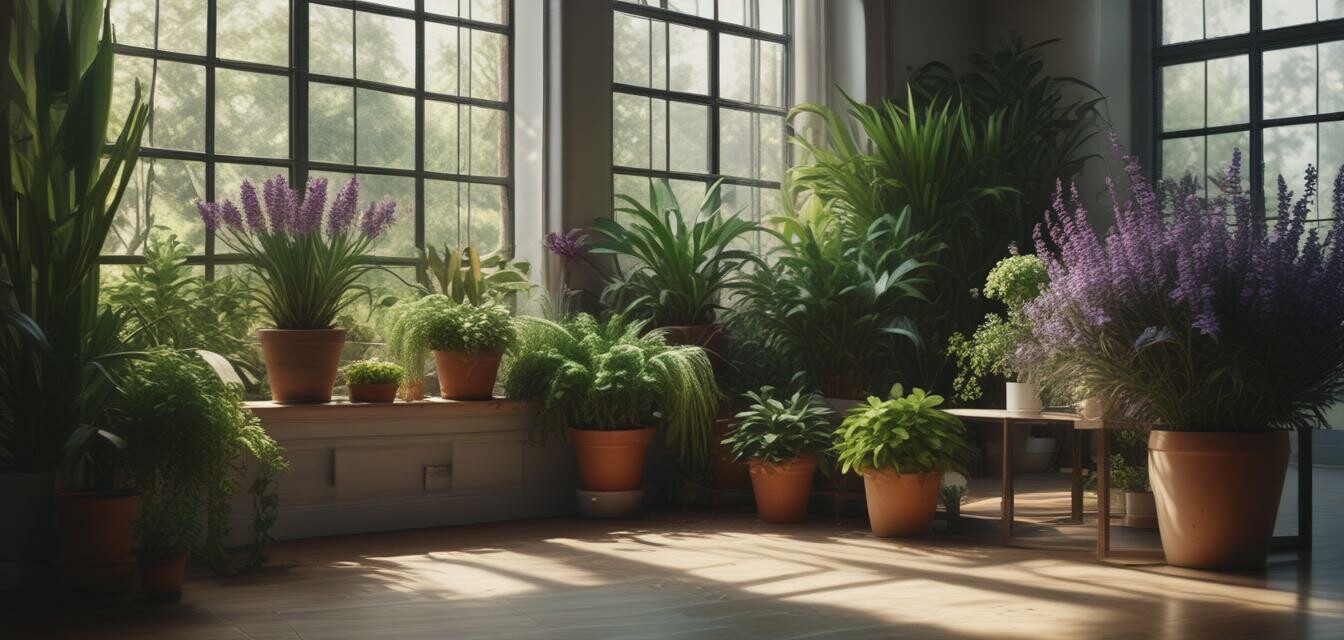
Top indoor plants for wellness and aromatherapy
Key Takeaways
- Indoor plants can improve air quality and enhance the mood.
- Some plants have aromatic properties that can be used in aromatherapy.
- Choosing the right plants can create a calming environment.
- Caring for plants can serve as a therapeutic activity in itself.
- Consider your space and light conditions before selecting plants.
Indoor plants are not only a great way to bring nature into your living space, but they also provide numerous wellness benefits. From purifying the air to enhancing your mood, these green beauties can positively impact your health. In this guide, we'll explore the best indoor plants that not only beautify your home but also play a role in aromatherapy practices.
Benefits of having indoor plants
- Improved air quality: Plants can absorb toxins and release oxygen.
- Mood enhancement: Being around greenery can lift your spirits.
- Stress reduction: Caring for plants can be calming and meditative.
- Increased focus and productivity: A pleasant environment can keep you more engaged.
- Aromatherapy: Certain plants can provide soothing scents.
Top indoor plants for wellness
| Plant Name | Benefits | Aromatherapy Properties | Care Level |
|---|---|---|---|
| Lavender | Reduces anxiety, promotes relaxation | Soothing and calming scent | Moderate |
| Eucalyptus | Acts as a natural air purifier | Refreshing and invigorating scent | Easy |
| Peppermint | Helps in enhancing mood and focus | Uplifting and fresh scent | Easy |
| Spider Plant | Improves air quality, reduces stress | Very mild herbal scent | Very easy |
| Peace Lily | Reduces indoor pollutants, brightens spaces | Sweet flowering scent | Moderate |
How to care for indoor plants
Proper care is essential for keeping your indoor plants healthy and thriving. Here are some basic tips:
- Light: Place your plants in appropriate light conditions, whether direct sunlight or indirect light.
- Water: Water them according to their needs. Overwatering can be as harmful as under-watering.
- Humidity: Many indoor plants thrive in humid environments; consider misting them or using a small humidifier.
- Fertilize: Feed your plants during the growing season for optimal growth.
- Repot: If your plants outgrow their pots, consider repotting them to give them more room.
Using plants in aromatherapy
Aromatherapy can enhance your wellness routine by incorporating scents from various plants. Here are some popular methods:
- Essential oils: Extract oils from plants like lavender and eucalyptus to use in diffusers.
- Herbal sachets: Create sachets with dried herbs to add soothing fragrances to your home.
- Tea: Make wellness teas from plants like peppermint or chamomile to enjoy their benefits.
- Baths: Add drops of essential oils to your bath for a restorative experience.
Conclusion
Incorporating indoor plants into your living space not only offers aesthetic value but also contributes significantly to your overall wellness. By selecting the right plants and understanding how to care for them, you can create a tranquil environment that promotes relaxation and encourages a healthy lifestyle. To explore more products that support your wellness journey, check out our comprehensive guides on wellness tips and latest trends.
Pros
- Enhances indoor aesthetics and mood.
- Reduces stress and increases well-being.
- Improves air quality.
- Can be used in various wellness practices.
Cons
- Some plants require specific care and conditions.
- Not all plants may suit every indoor environment.
- May require investment in pots, soil, and fertilizers.
